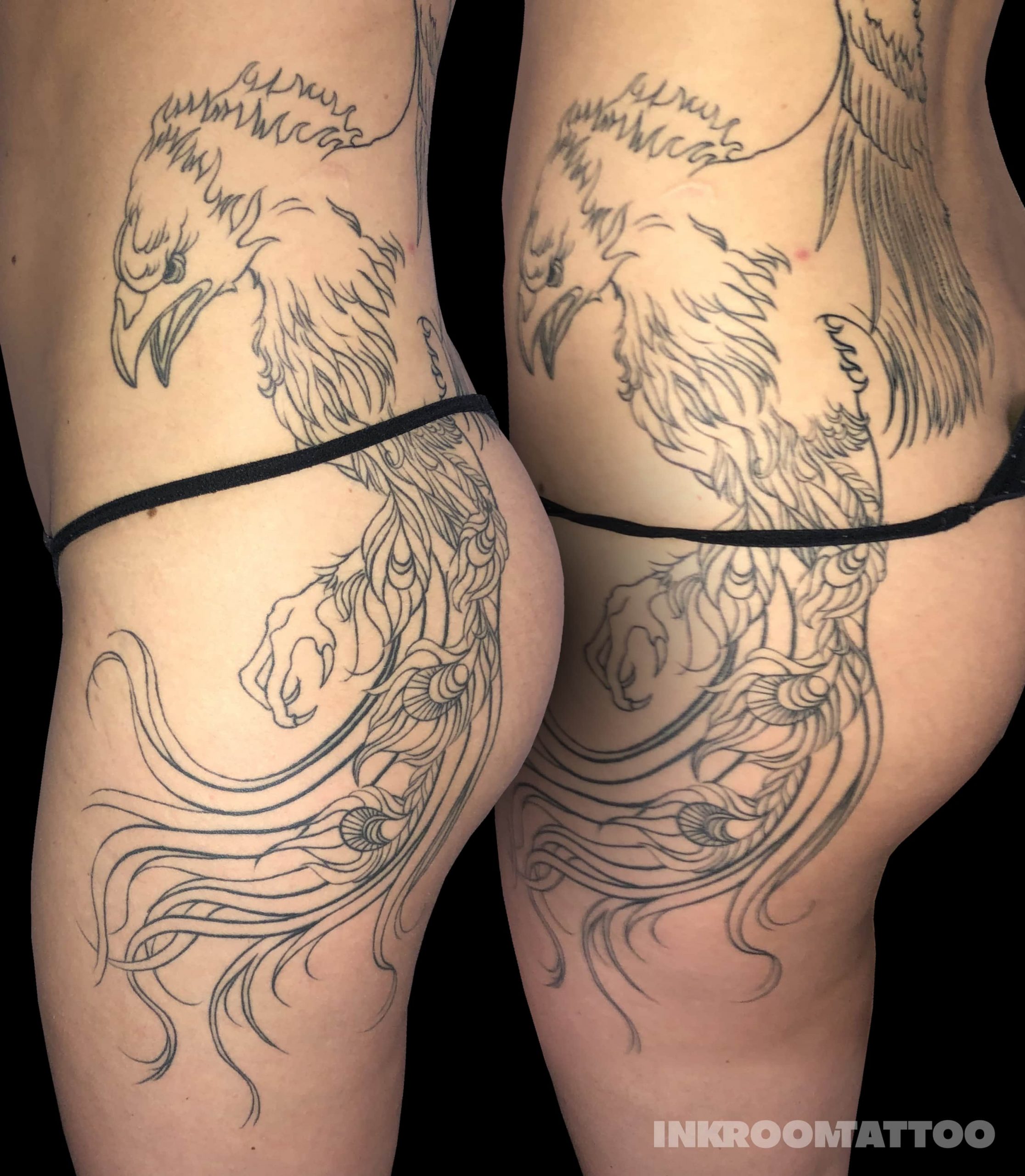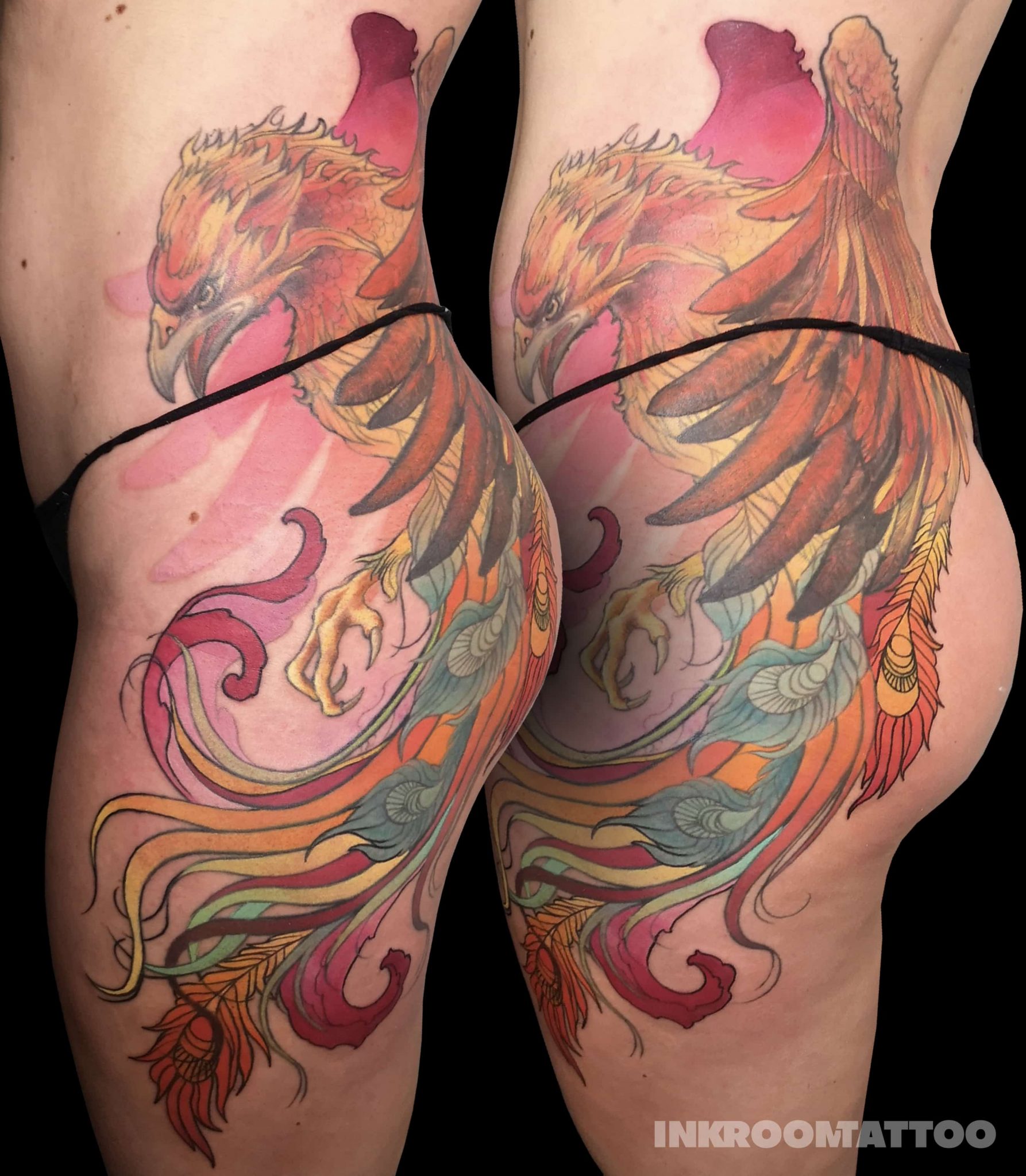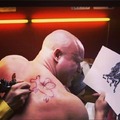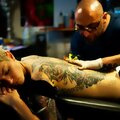Why Do People End Up with Botched Tattoos?
A tattoo is supposed to be a final decision. At least, in theory. But reality is far more complex: a poorly chosen design, an inexperienced tattoo artist, an impulsive decision or even a unique healing reaction of the skin can all lead to damage that seems irreversible. But there is hope – tattoo correction and cover-up have become a distinct art form in today’s tattoo world.
The Most Common Mistakes in Botched Tattoos
Incorrect Proportions and Anatomical Errors
A portrait that looks like it’s winking, or a lion whose face resembles more of a house cat – these kinds of proportion errors are instantly noticeable and ruin the entire piece.
Smudged Lines and Deep Needle Work
Ink that’s been pushed too deep is not only more painful but can also leave permanent scarring. Smudged outlines often resemble a bad marker drawing rather than a professional tattoo.
Misspelled Texts and Grammatical Mistakes
What was meant to be a meaningful quote becomes a nightmare when you see something like: "Halgass a szívedre." (instead of "Hallgass...") permanently etched on your skin.
Tattoo Cover-Up or Correction – Which Is the Right Choice?
Correction – When the Original Is Still Salvageable
If the design itself is solid, and only the execution went wrong (e.g. faint lines, slight misalignments in small details), a professional artist can breathe new life into the work with retouching and shading.
Cover-Up – When It’s Time for a Clean Slate
For more serious issues, embarrassing symbols, or – let’s face it – an ex’s name, a cover-up is often the best solution. And it’s not just about drawing over the old design, but rather a complete re-imagining, where the new art builds upon the shadows of the old one.
What Makes a Good Cover-Up Tattoo?
Bold Composition
To effectively hide the old ink, you’ll need deeper colours, stronger contrasts and detailed textures. A good cover-up is not small or subtle – it’s bold, creative, and artistic.
Custom Design
A great tattoo artist doesn’t rely on generic templates. They design the new tattoo around the old one, taking into account skin tone, previous design elements, body anatomy and the client’s personal story.
The Cover-Up or Correction Process Step by Step
1. Consultation
This is the most crucial first step. The artist analyses the existing tattoo, determines the extent of the damage, and honestly tells you what can – and can’t – be done.
2. Design Planning
This is where the new design is born – not only visually appealing but also technically in harmony with the old one. A good cover-up isn’t just forced masking, but a complete, standalone work of art.
3. Execution of the Tattoo
Cover-ups and corrections often involve more pain than a fresh tattoo, as they typically require working in thicker layers and multiple passes over the same area.
4. Healing and Aftercare
Extra care is essential during healing – cleaning and moisturising are key, especially where the old and new layers meet, as complications are more likely in these areas.

Best Tattoo Styles for Cover-Ups
Blackwork
Strong black designs with bold contrasts – perfect for covering large surfaces.
Neo-Traditional and New School
Colourful styles with bold outlines that can embrace and utilise the tones of the old ink.
Japanese Style
Highly detailed with flowing lines – excellent for hiding flawed tattoos within complex compositions.
Things to Keep in Mind Before Getting a Cover-Up
-
Don’t expect miracles in an hour – designing and executing a cover-up takes time and effort.
-
Don’t try to cover black with white – ink doesn't work like paint. Dark ink in the deeper skin layers will nearly always "show through".
-
Be open to new styles – your old tattoo might require a new style you hadn’t considered originally.
How to Choose the Right Tattoo Artist for a Cover-Up
-
Ask for references: look at the artist’s previous cover-up work. A good cover-up should look natural – not like it’s hiding something.
-
Don’t base your choice on price: correcting a bad tattoo might cost more upfront, but it’ll save you money in the long run, as you won’t need repeated fixes.
-
Communication is everything: a professional artist will be honest and upfront, and won’t take on what’s impossible.
Laser Removal – Alternative or Pre-Treatment?
In some cases, partial or full laser fading of the old tattoo can improve the results of a future cover-up. It’s more painful, expensive, and time-consuming, but for particularly dark or detailed tattoos, it may be worth considering.
There’s No Such Thing as a Hopeless Tattoo – Only a Poor Attitude
A botched tattoo is not the end of the world. It can become a lesson, a rebirth, even a new personal masterpiece. The key lies in patience, the right artist, and refusing to compromise when it comes to your self-expression.







